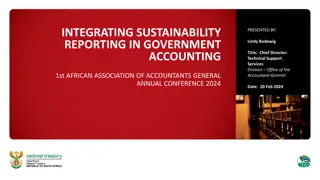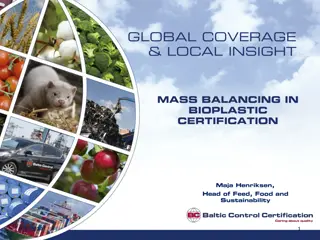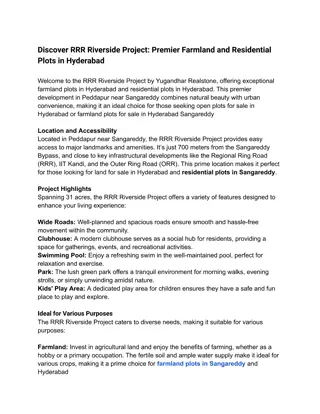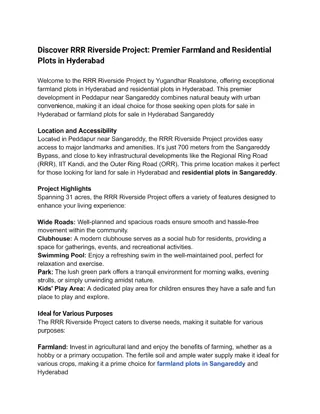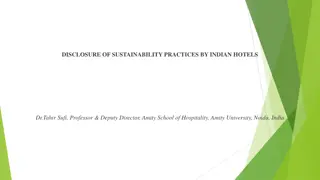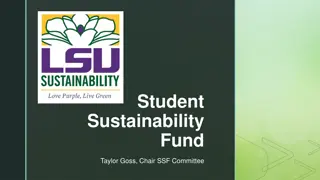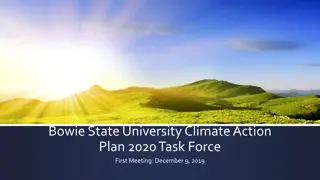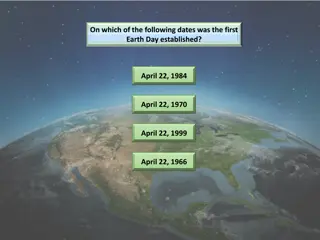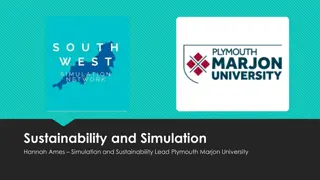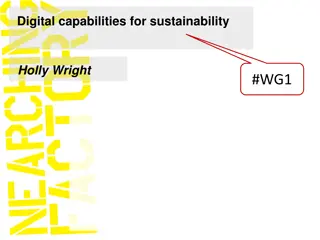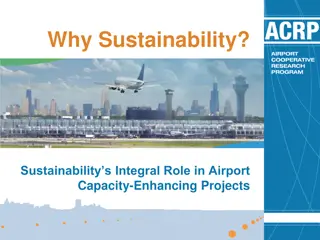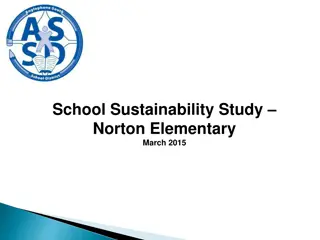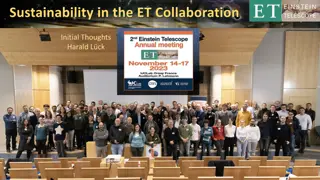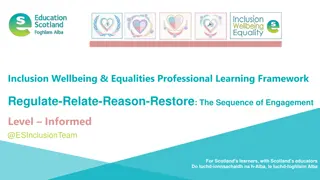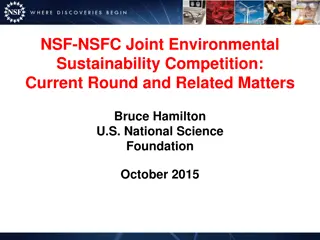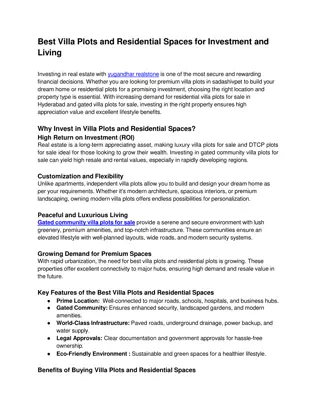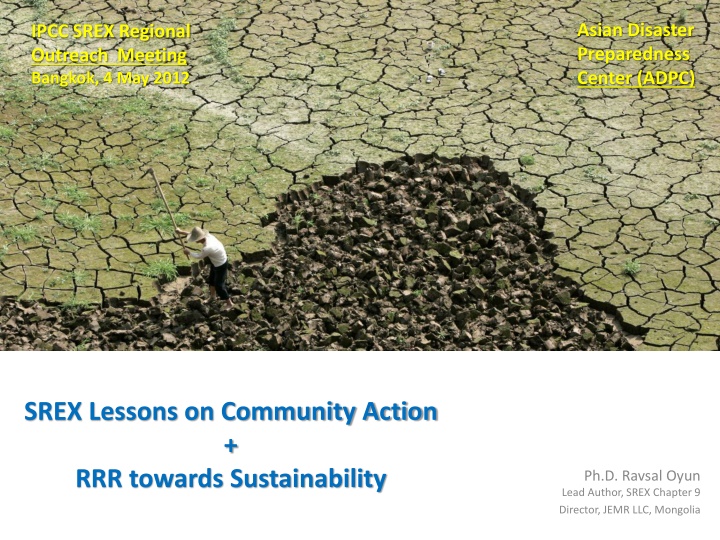
Lessons on Community Action & RRR towards Sustainability
Effective disaster risk management and climate change adaptation at the local scale are essential for building resilient communities. Community-based adaptation empowers locals to take control and enhance adaptive capacity. However, challenges such as urban vulnerability, information constraints, and barriers to collective action need to be addressed. Integrating climate information into disaster planning and implementing ecosystem management measures are key strategies for promoting sustainability.
Uploaded on | 0 Views
Download Presentation

Please find below an Image/Link to download the presentation.
The content on the website is provided AS IS for your information and personal use only. It may not be sold, licensed, or shared on other websites without obtaining consent from the author. If you encounter any issues during the download, it is possible that the publisher has removed the file from their server.
You are allowed to download the files provided on this website for personal or commercial use, subject to the condition that they are used lawfully. All files are the property of their respective owners.
The content on the website is provided AS IS for your information and personal use only. It may not be sold, licensed, or shared on other websites without obtaining consent from the author.
E N D
Presentation Transcript
Asian Disaster Preparedness Center (ADPC) IPCC SREX Regional Outreach Meeting Bangkok, 4 May 2012 SREX Lessons on Community Action + RRR towards Sustainability Ph.D. Ravsal Oyun Lead Author, SREX Chapter 9 Director, JEMR LLC, Mongolia
Contents 1. SREX Lessons on: Linking Local to Global DRR & CCA at local Limitations of DRR & CCA at local Learning & transformation 2. Responding climate change with RRR
1. SREX LESSONS ON COMMUNITY ACTION
Effective DRM & CCA at the local scales Approaches and responses: To focus on integrating information about CC risk into disaster planning and scenario assessments of the future. Setting up plans in advance, enabled communication systems to be strengthened before the extreme event struck. Community-based adaptation (CBA) helps to define solutions for managing risks while considering CC. CBA responses provide increased participation by locals and recognition of the local context and the access to adaptation resources and promote adaptive capacity within communities. A critical factor in CBA is that community members are empowered to take control of the processes involved. Scaling up CBA poses a challenge as well as integrating climate information and other interventions such as ecosystem management and restoration, watershed rehabilitation, agroecology, and forest landscape restoration. These types of interventions protect and enhance natural resources at the local scale, improve local capacities to adapt to future climate, and may also address immediate development needs.
Limits to adaptation at the local level Traditionally, local RM focused on short-term climatic events. It is more crucial now to focus on building the resilience of communities, cities, and sectors . Actions can be taken at the levels of individual or households are often event-specific and time-dependent. They are constrained by location, adequate infrastructure, socio- economic characteristics, and access to disaster risk information. Increased urban vulnerability due to urbanization and rising population exacerbates disaster risk by the lack of investment in infrastructure as well as poor environmental management, and can have spillover effects to rural areas. Obstacles to information transfer and communications are diverse, ranging from limitations in modeling the climate system to procedural, institutional, and cognitive barriers in receiving or understanding climatic information and advance warnings and the capacity and willingness of decision makers to modify action. Within many rural communities, low bandwidth and poor computing infrastructure pose serious constraints to risk message receipt. Such gaps are evident in developed as well as lesser-developed regions. Constraints exist in locally-organized collective action because of the difficulties of building effective coalitions with other organizations.
2. RESPONDING CLIMATE CHANGE WITH RRR
Responding climate change with RRR In addition to current policy of adaptation and mitigation of climate change there is a need for global and national strategy, and supporting investment policy that promote initiatives to: Renovate technology (for greening) and Re-engineering of economic and social systems (of scales from local to worldwide) towards Rehabilitation and/or restoration of nature, the environment and natural renewable resources. These 3 Rs (or RRR) will encourage: actions and creativity of engineers and researchers, active participation of businesses, community, households increase job opportunity and alleviate poverty at local.
Thank you for attention! Ph.D. Ravsal Oyun, Mongolia oyun@jemr.mn



